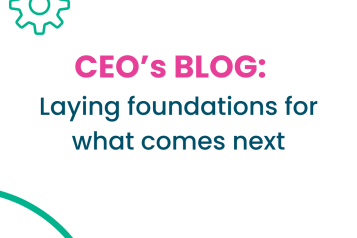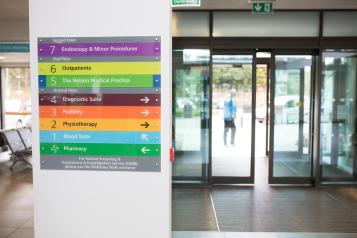Waiting lists are inevitable. It's how we manage them that matters.

It is well known that COVID-19 has had a significant impact on hospital waiting times.
Early in the pandemic, the NHS postponed lots of non-urgent care, freeing up beds for COVID-19 patients. As things progressed, people put off coming forward with new symptoms because they were simultaneously worried about putting extra pressure on the NHS and the risk of catching COVID-19 themselves.
Most recently, the struggles of seeing a GP may mean there are even more people who need hospital care who simply cannot get referred in the first place.
All this has combined to create a huge backlog of people waiting for a diagnostic test or treatment.
Even with the extra money announced by the Government, long waiting lists are here to stay. The NHS lacks the staff to see people more quickly, and doctors, nurses and other clinicians take a long time to train.
But what does this mean if you or a loved one are currently on a waiting list or think you may need hospital treatment?
Over the last three months, Healthwatch have heard from more than 2,500 people about their experiences, helping us to dig beneath the headlines and support the NHS to make good policy decisions on how best to manage waiting lists.
Current waiting lists
How long are people actually waiting for care?
Let’s start by looking at how long people are actually waiting for hospital care.
At a glance, media headlines can give the impression that very long waits are the norm and that everyone will be waiting two years to be seen. But in reality, many people will get care much faster than this.
For example, the latest performance figures show that the most typical waiting time is 11 and a half weeks to start treatment.
Of the 2,500 people that Healthwatch spoke to, nearly one in ten (8%) reported waiting for more than two years to receive care. This is still far too many, given the impact waiting can have on someone’s mental and physical health, but is lower than many may think.
The problem with how waiting lists are talked about is that people may see no point in seeking out a crucial diagnosis or much-needed treatment because they fear they will never be seen anyway or feel guilted into not ‘burdening’ the NHS further. This risks creating even bigger problems for patients and the NHS.
Who is waiting for the longest?
In September, Healthwatch England joined forces with the King’s Fund to show that people who live in poorer areas are nearly twice as likely to experience a wait of over a year for hospital care than those in the most affluent areas.
Their further analysis found that people on low incomes are significantly more likely to report living in pain and struggling to manage work and household chores due to their wait.
While the numbers of people from minority ethnic communities who responded to our research was small, there is some indication that people from Black, Asian and ethnic minority backgrounds are experiencing similar issues to those on low incomes. This came through in both our polling and our national survey.
The NHS must look into both of these trends or risk significantly exacerbating existing health inequalities due to how they are managing waiting lists.
How big of an issue are cancellations?
Whether people are waiting for an appointment or surgery, cancellations are one of the most significant issues raised with us about the current pressures.
We know from previous work that it is not just the length of the wait that affects people's experience but certainty too. People want to know they have a date in the diary for their treatment, and they want to be able to plan their lives around it.
Whether it be work commitments, caring responsibilities or even scheduled treatment for other conditions, there are plenty of reasons why people cannot simply work to the NHS’s timetable. Cancellations, especially when they are last minute, can cause major disruption to people’s lives and leave them feeling dejected.
Research found that over the last 18 months, one in three (32%) had a procedure cancelled at least once (15% more than once).
Of those who had treatment cancelled, 18% were on the day itself, and a further 29% had it cancelled in the week leading up to it.
People appreciate the pressures the NHS is under, particularly now, but such high levels of late notice cancellations are a problem.
The first cancellation in July 2021, I was being wheeled down to surgery when they turned me around and took me back to the ward as no ICU bed available. They promised to do the surgery on 26th July 2021 and would make sure no one took my bed. I started a week in isolation at home prior to surgery, only to receive a phone call 3 days before the procedure that it was cancelled and couldn't give me another date. I have heard nothing since about another date.
What is waiting for care like?
While the overall length of time spent on lists and certainty that a procedure will go ahead are key to people’s experience, they are not the only factors that affect what it’s like waiting for care and their quality of life.
Communication
Many people told Healthwatch that the amount of supporting information they were given while waiting for care was inadequate, especially in helping them manage their condition.
- In the self-selecting survey (likely to have a higher proportion of respondents with a negative experience), 58% said they received no information at all. A further 21% said the information the NHS provided them with was not good enough.
- Even in the nationally representative polling, conducted by YouGov, a disappointing 45% of people said they received no information or not enough whilst waiting.
"From being referred for a total hip replacement on February 11th, 2020, I finally had my operation on August 31st 2021. That was a wait of over 18 months during which time my condition and the excruciating pain accompanying it deteriorated significantly so that I became virtually housebound. At no time was I ever contacted by anyone with updates of any kind but was left to suffer in silence. Primary care was catastrophic and trying to see a GP was nigh on impossible. It has been such a difficult time because I have no family in the UK. I felt completely abandoned and alone and there were times when I lost all hope and seriously felt I'd be better off dead."
Research also found that lower-income respondents were even less likely to say they had received information. Where they did receive information they were more likely to say it was inaccessible or of limited use to them.
Interim support services
Healthwatch asked people if they had received any more practical interim support, such as pain relief, physiotherapy or mental health support, whilst they waited for their hospital treatment.
Just 15% of those surveyed said they had received some support, with 82% saying they didn’t receive any help at all. Not everyone surveyed will have needed support, but this is still surprisingly high.
Where people face long waits, it is precisely this interim support that can make the experience bearable.
"Two steroid injections in two months - was put on waiting list when consultant saw my x-ray during that procedure. 6 months later I requested a 2nd steroid injection as the pain had become unbearable, I got a month of my choice to allow me to be comfortable enough to enjoy a short break away. Through rest it remains bearable."
Interim support also helps keep them well and gets them ready for surgery. Without it, people’s health can deteriorate significantly which has a devastating impact on patients and will cost the health and social care system in the long run.
Solutions: What is currently being done?
NHS England recognised early on in the pandemic that improving communication with patients on waiting lists would be crucial. With the help of key partners, including us, they produced a guide to good communications for hospitals to use when contacting those waiting for care.
Healthwatch recommendations
Fix the communications:
- Implement the guide to good communications.
- Put regular updates in place for patients and families so people don’t feel forgotten.
- Make it easy for patients to update the NHS when there are changes in their condition.
- Don’t force people to go through already burdened GP practices to seek updates on their treatment.
- Recruit admin staff to manage lists better.
Provide more support services:
- Use some of the money for the backlog to increase support for people while they wait, like specialist pain management, physiotherapy and mental health support.
- Work with Healthwatch and the voluntary sector to properly understand how the NHS could expand support services even more, to help people survive waiting.
- Where patients are offered quick treatment at specialist hubs, ensure no one is excluded from this option. This means providing transport and help with accommodation for carers and relatives.
Structural recommendations:
- The Government should consider widening statutory sick pay thresholds to help those struggling to work due to longer than usual waits.
- Continue to provide dedicated funding for discharge processes to help get people out of hospital faster and with the right recuperation support, freeing up beds for new patients.
- Use the clinical review of standards to develop processes to limit anxiety for patients waiting in silence and provide better data for hospitals to manage demand.
Where the data comes from
The views report above come from two evidence sources:
- The views and experiences of 1,441 people and relatives of those currently on waiting lists gained by national polling commissioned by Healthwatch England and carried out by YouGov Plc between 19 and 23 August 2021.
- The views of 1,075 people in Healthwatch England’s national survey, promoted by local Healthwatch, which ran between 6 September and 11 October 2021.


